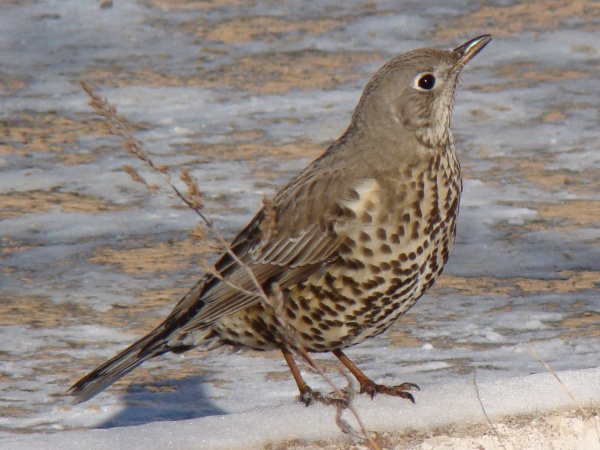Facts About Mistle thrush
The mistle thrush is a fascinating bird native to Europe, temperate Asia, and North Africa. This large thrush is easily recognizable by its grey-brown upper parts, greyish-white chin and throat, and black spots that pattern its yellow and off-white underparts. Renowned for its loud and far-reaching song, the mistle thrush has earned the nickname "stormcock."
In terms of diet, these birds are quite adaptable. They consume invertebrates, seeds, and berries, with a particular affinity for mistletoe, holly, and yew fruits. For nesting, mistle thrushes construct open cup nests high in trees and are known for fiercely defending them.
The mistle thrush is a year-round resident in many regions, although birds in the northern and eastern parts of its range migrate south during the winter. Taxonomically, it belongs to the genus Turdus and has three recognized subspecies. It shares close affinities with the song thrush and the Chinese thrush.
As the largest thrush native to Europe, the mistle thrush is both easy to spot and hear. It thrives in open woods, parks, hedges, and cultivated lands. Although its range has historically expanded, recent declines are attributed to changes in agricultural practices. Nevertheless, the International Union for Conservation of Nature (IUCN) classifies it as a species of least concern.
The breeding season typically begins around mid-March in Europe. Mistle thrushes are monogamous and claim larger territories compared to other thrush species. A typical clutch consists of three to five eggs, with both parents participating in raising the young. By feeding on invertebrates, fruit, and berries, these birds play a crucial role in the dispersal of mistletoe seeds.
Despite facing threats from birds of prey and parasites, the mistle thrush population remains robust, numbering in the millions. While there have been historical range expansions, recent population declines highlight habitat loss and changes in agricultural landscapes as potential threats. However, given their large population and extensive range, immediate conservation efforts are not a pressing concern.

 Italy
Italy